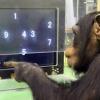-
Posts
132 -
Joined
-
Last visited
About GeeKay
- Birthday 10/19/1950
Profile Information
-
Location
Lincoln UK
-
Interests
Cycling, swimming, reading, writing and generally making the best of life. I intend to do a lot of motorhome-style travelling in the nearish future, complete with my favourite touring bike and a decent sized telescope. And I'm looking forward to it - immensely.
-
College Major/Degree
BA (hons) English Literature at the University of Wales, Aberystwyth
-
Favorite Area of Science
Astronomy
-
Occupation
Ex-private tutor (English Lit). Now retired.
GeeKay's Achievements

Baryon (4/13)
2
Reputation
-
Actually I was looking for some info about single homogeneous asteroids as opposed to conglomerates, but that would appear to be out of the question, at least for now. I'll try again in a few years' time. PS. Some of those slabs would make for interesting fireside ornaments.
-
GeeKay started following The Limitations of Lidar in Deep Space , Monolith asteroids: a Silent Order. , How many M-Type asteroids will Earth (truly) need? and 4 others
-
I'm seeking some (any) online information about small monolith asteroids. . . including info about the kind of rocks that form them. Unfortunately Google search hijacks this simple query by substituting it for rubble pile asteroids (even Wikipedia plays this trick). Try it: type "monolith asteroids" (with quotes) into the Google search bar and see what happens. Weird.
-

How many M-Type asteroids will Earth (truly) need?
GeeKay replied to GeeKay's topic in Other Sciences
Yes, I do wonder sometimes if future developments in nanotechnology and its ilk down here on Earth may dispense with the need to extract precious metals from asteroids in the first place. Even that isn't a given, of course. Few thing are. -
I read somewhere that a single 30m wide near-Earth asteroid (2012-DA14) may be worth some $20 trillion dollars in terms of its rare metals content. Meanwhile, the global precious metals market in 2022 was worth $290 billion dollars. That's approximately one hundredth of what DA14 could offer the world. Does this mean then that the mining of one small run-of-the-mill asteroid every few years would be plenty enough to satisfy Earth's needs for the foreseeable future? In other words having an entire offworld mining industry with fleets of asteroid mining outfits plundering the Main belt for its platinum-group metals etc, etc, would be superfluous. . . strictly for the birds, in fact? Of course, this doesn't factor in surveying costs, those required by heavy plant infrastructure, transportation costs, risk factors and all the other negatives that must otherwise weigh down such an enterprise. Even so, just for the sake of argument - assuming, for instance, fusion-powered spacecraft are running the show by now instead of chemical rockets - would the above thought experiment still hold some water here? PS. I've posted this question here in the Lounge, given that its topic addresses mineralogy as well as astronomy. Couldn't think where else to put it. Correction: the ballpark figure quoted above should be one 69th rather than a 100th. My apologies.
-
Thanks for that. So assuming for argument's sake that QCs were to become general purpose PCs at some point in the future, would it then be correct to assume they would indeed require a password. . . if only to protect them from being hacked into by other QCs?
-
Apologies for asking such a basic question, but Google search seems incapable of addressing it correctly: Do (or will) quantum computers ever require password protection of their own? Or are they their own protection? Many thanks.
-
With regards to biological sentience and whatever forms AI might exhibit of it in the future, I do wonder how it would manifest in AI (AGI?) if one holds to the view that evolutionary drives have played a major role in promoting sentience in some mammals. Of course, the fact that roboticists are able replicate many other features drawn from animal nature - mechanical hands etc - might question the validity of this view. Still, mental processes, as opposed to physical attributes, could still raise a very high bar here, all the more so given that we currently lack a scientific description of human consciousness itself. In addition, it seems that the importance of emotions is too often downplayed, or even ignored when it comes to explaining (say) human motivations, decision-making etc. Indeed, some neuroscientists claim that "consciousness, requiring autobiological memory, emerges from emotions and feelings" - not the other way round (Damasio). Does this mean AI-style consciousness can't arise without emotive inputs? Well, that's a question way beyond this poster, that's for sure! All that can be suggested here is that were machine sentience to occur, it might turn out to be a very different beast than whatever it is that's buzzing away between our ears. It could be that one reason why consciousness is famously considered the 'hard problem' is because there are so few analogues of it occurring elsewhere in living nature. Yes, we now know that certain other animals possess it within degrees - our primate cousins, dolphins, elephants etc. Unhappily there appears to be no way that even the smartest of elephants can meaningfully communicate with us about how their consciousness compares with our own. For sure, this might not solve the issue, even if they could - but it could still fill in some important blanks along the way. An encounter with an advanced alien civilisation, on the other hand, could well be game over, were that to ever happen. . . PS. I really like Mistermack's idea about shadows as an alternative to mirrors. Also, Peterkin's explanation why dogs can't be asked to recognise their visual images reflected in mirrors. An olfactory alternative? Thanks again.
-
Many thanks for the contributions. They've given me a great deal to think about on the subject of machine consciousness, vis-a-vis the mirror test. Proof appears to be the big decider here, a salutary point and one I hadn't fully appreciated until now. As for explaining why a machine should have consciousness (the "hard problem" for AI systems?) in the first place, that's a question for another time, I guess. Meanwhile, again many thanks. . . much food for thought! 🙂
-
This may come across as a self-answering question, but here goes: if a robot was able to "convincingly" pass the mirror test, does this prove it has self-awareness? Or would it be simply down to clever programming? In other words, are there limits to the mirror test as it applies to robots? (I've restricted this query to free-standing robots because I'm uncertain how a mainframe computer or AI system could be tested in this corporeal sense). Thanks for reading this post. Any responses would be greatly appreciated.
-
So the OTP is a Vigenère cipher, after all. Simon Singh does a good job explaining Vigenère ciphers in the book - good enough for a tyro like me to understand the tabular process. The take-home message then is that a third-party can get an OTP's plaintext from the (revealed) key by the above method. Thanks also for the links.
-
This post refers to the (excellent) primer on codes and ciphers, namely The Code Book by Simon Singh. The question itself concerns the one-time pad cipher, the one form of encryption which is claimed to be truly unbreakable, that's to say proof against any known form of cryptoanalysis. . . short of telepathy? One aspect about this cipher is bamboozling me, however. Namely it's this: would it be possible to crack a given one-time pad cipher if one was already in possession of the key? Singh offers this example: Key: P L M O E Z Q K J Z L R T E A V C R C B Y Plaintext: a t t a c k t h e v a l l e y a t d a w n Cybertext: P E F O G J J R N U L C E I Y V V U C X L Unfortunately, I cannot see how a hacker with full knowledge of both the cybertext and the key would be able to generate the above plaintext. Unlike the key of a Vigenere cipher, for instance, the above key has no obvious structure, contains no recognisable words. It is entirely random, which means it's incapable of providing clues about the plaintext to a would-be hacker. And yet, Singh goes on to state that possession of the key would enable just such a hacker to break the code. But how exactly? Being structureless means the key would resist frequency analysis, for example. Chaos is chaos, after all. The only possibility that comes to mind is that the one-time pad is itself a Vigenere cipher, but this is only a wild guess on my part. Whatever, something fundamental is missing in my understanding of codes and ciphers which I'm simply not getting ☹️ So any help here would be greatly appreciated. Many thanks!
-
Having recently read up about the Beale Papers and the seeming impregnability of its two remaining unbroken ciphers to cryptanalysis (even allowing for the possibility that they may be fake) I should like to know if quantum computers will be able to crack such so-called 'book ciphers'. I gather that the one-time pad cipher is said to be - when applied correctly - theoretically impossible to break by any known means, which may be a comforting thought. So does the same invincibility apply to book ciphers like those two (alleged) ciphers contained in the Beale Papers? Many thanks. https://en.wikipedia.org/wiki/Beale_ciphers
-
Yes, I sort of guessed that beam spread etc might be too problematic beyond a certain distance. So it appears then that optical telescopes are still the only reliable means we have for detecting asteroids and so forth. All the same, spotting any incoming comets by optical means alone while they're still beyond the Jovian snowline could be quite a challenge, especially given their generally very low albedos. I can't (as yet) find the article which prompted this thread, but a recent one from Centauri Dreams may suffice: https://www.centauri-dreams.org/2021/09/02/deep-space-network-a-laser-communications-future/
-
This question concerns possible future uses in space of Lidar (Laser Imaging, Detection & Ranging) with regards to the detection of incoming asteroids, comets etc. Thus what would be the limiting distance of a Lidar system of a given power output in terms of resolution? Could its laser beams in theory be able to extend from Earth orbit to as far away as (say) the Main Asteroid belt, or even further afield? Or would the beam's width or 'spot-size' by then be too distended/incoherent to be of any use? Forgive any imprecision in the use of scientific terms here. Many thanks.
-

Help needed over a "three body" orbital calculator
GeeKay replied to GeeKay's topic in Classical Physics
It's okay. I have it now. . . it's the 'Hill Sphere" set of calculations I was seeking. Phew. . . https://en.wikipedia.org/wiki/Hill_sphere




